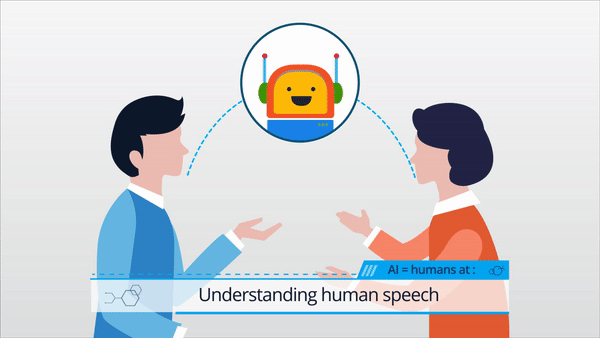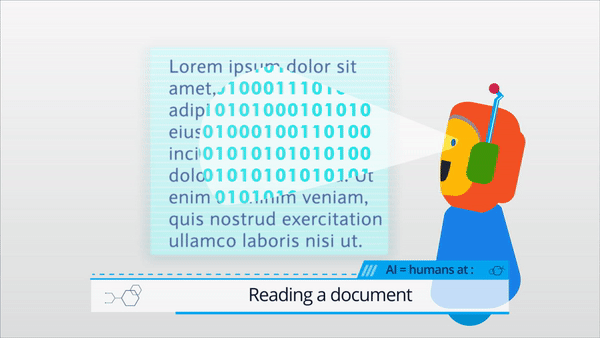
Making artificial intelligence human-centric
Suppose you, a monolingual English speaker, are placed behind a closed door and fed questions through a slot, written in Chinese. You have a book that translates every Chinese character to English. You are able to figure out the Chinese inputs, and produce appropriate outputs by referring to the book such that the Chinese-speaking human on the other side of the door believes that they’re conversing with another Chinese-speaker.
Would you say you understand Chinese, or merely simulating the ability to do so?
This is a thought experiment presented by philosopher, John Searle, in 1980, who likens you inside the room to “weak artificial intelligence” (AI). “Weak AI” fails to demonstrate truly intelligent language processing on par with humans. This is contrasted with “strong AI” or artificial general intelligence (AGI)—AI that can understand or learn an intellectual task that a human can.
Since then, we could see Searle’s skepticism as, instead, a prelude to how far we’ve come with regards to AI being “as good as” humans, or what we can call, human parity.
What is human parity?
Human parity is currently most discussed in the field of language processing and machine translation.
Microsoft reached a human parity milestone in 2018 when it created an AI whose Chinese to English translation was indistinguishable from a human’s. For this research, one can conclude that “if a bilingual human judges the quality of a candidate translation produced by a human to be equivalent to one produced by a machine, then the machine has achieved human parity.”[1]
Perhaps this definition seems to resonate with Searle’s Chinese-imitating, weak AI example. But AI-human parity has come far closer to AGI in the past few years.
The best illustrator of moving from weak to strong, self-learning AI, presently, is the progress from Statistical Machine Translation (SMT) to Neural Machine Translation (NMT) systems (also used in Microsoft’s 2018 milestone). In SMT, a statistical model uses already translated text as a reference to predict or guess how to translate foreign language text—akin to us in the Chinese Room. NMT is modelled after the neural networks in the human brain, and uses algorithms to learn linguistic rules on its own from statistical models. This is the closest we’ve gotten to AI-Human parity, at least in the field of machine translation.
Human parity may seem too complex for everyday applicability, but we already see some of it in action today.
AI among humans
Everyday human parity is demonstrated in various cases from finance, education, to entertainment.
Microsoft has done its fair share since March 2018. In December 2018, YES BANK, India’s fourth largest private sector bank, built the first conversational AI-chatbot for banking services, which now handles over half a million customer interactions every month. The chatbot can identify the intent of the user with over 90% accuracy and has been widely accepted by bank customers — testimony to which is Rs. 5.2 billion worth deposits booked through it. Another example is UNSW Sydney’s Question Bot. Trained with Microsoft Cognitive Services and QnA Maker, the Azure bot learns recognize relationships between answers and concepts over time to autonomously to answer questions from engineering undergraduates.
Concurrently, AI experts have repeatedly proven the boundless limits of AGI’s potential for use.
In 2018, OpenAI, an AI research company based in San Francisco, taught a team of five neural networks, named OpenAI Five, to self-learn Dota 2—a real-time strategy game in which two teams of five compete. OpenAI Five self-learned Dota 2 by playing 180 years’ worth of games everyday. Since 2018, it has moved from beating amateur players, to beating the world champion team in two back-to-back games in April 2019[2]. More significantly, OpenAI Five proved AI’s ability to account for the messy, unplanned nature of the real world, signaling AI’s increasing potential for human-like intellect.
Can AI become post-human?
Microsoft’s 2018 achievement in AI-human parity was well in advance of what researchers in AI had predicted would occur in 2024[3], and the above cases speak to AGI’s imminence.
Microsoft CEO Satya Nadella has said, “AI is one of the most transformative technologies of our time and has the potential to help solve many of our world’s most pressing challenges.”
AGI has the potential to solve intractable multi-disciplinary issues including healthcare, and hot topics like climate change (pun well intended). Microsoft’s own AI for Earth initiatives are examples.
Opportunities for AGI development must be seized. But where our era of technology has confronted us with questions surrounding privacy, security and inclusion, perhaps the most important approach towards AGI is one that is “human-centered” and a reflection of human values that we hope sustain our society for our children and theirs.
[1] Hany Hassan et al. Achieving Human Parity on Automatic Chinese to English News Translation, 2018, https://www.microsoft.com/en-us/research/uploads/prod/2018/03/final-achieving-human.pdf
[2] OpenAI, “OpenAI Five Finals”, last modified March 26, 2019, https://openai.com/blog/openai-five-finals/
[3] K. Grace et al. “Will AI Exceed Human Performance? Evidence from AI Experts,” (2017), https://arxiv.org/pdf/1705.08807.pdf
















